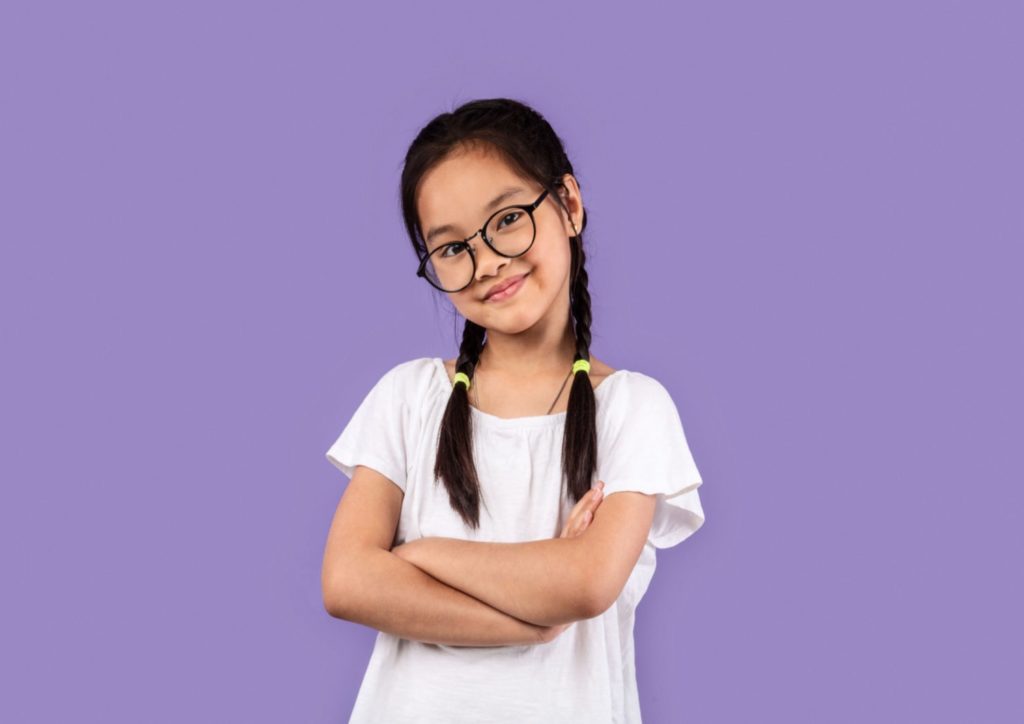Myopia, or nearsightedness, is one of the most common vision conditions affecting Canadians. This condition affects 33% of children in Canada and is growing. Frequent eye exams are one of the best defenses you have against myopia. In children, it can be diagnosed early and treatments can be used that help to slow down the progression of this refractive condition. Myopia control treatments for children can involve a combination of contact lenses, glasses, or atropine eye drops.
What Are Myopia Control Treatment Options for Kids?
Glasses
MiYOSMART lenses help to slow down the progression of myopia in children. These specially created glasses are made and designed to fit a child’s life. MiYOSMART glasses can be worn as regular glasses with added benefits for children because they are impact resistant and have UV protection.
These corrective glasses are able to slow down the progression of myopia by working to slow down the growth and elongation of the eye. MiYOSMART lenses have been shown to slow down myopia progression by up to 60%.
Atropine Eye Drops
Atropine eye drops are one of the most effective ways to control and slow the progression of myopia. Atropine drops are used to dilate the pupils and many times used during eye exams. When being used in myopia control therapy, the pupil is dilated and paralyzes the muscles in the eye used for focusing, temporarily. This also helps to relax the muscles in the eye. While this treatment is effective, it may not be right for every child. The solution is diluted to 0.01% and has little to no side effects. Your eye doctor will be able to prescribe this for your child, based on their condition.
Contact Lenses
Depending on the age of your child, there are a few types of contact lenses for myopia control.
- Peripheral defocus contact lenses are contacts that can be worn by children who are 6-12 years old. These help by changing the focus in different parts of the eye. In the center of these contacts, it helps to correct the blurry vision that myopia is causing while the outer or peripheral areas will blur or change the focus of the other part of the eyes.
- Orthokeratology, or ortho-k lenses, are worn overnight. These lenses help to change the shape of the eye while your child is sleeping to help correct their vision during the day. While this treatment is effective to slow down the progression of myopia, it can be reversed. Once the lenses are not worn anymore, the eye can revert back to its former shape.
Why Is It Important to Control & Slow Down the Progression of Myopia?
Myopia in children can be treated quite early. Should your child not have regular eye exams and this condition go undiagnosed, it can lead to more severe eye and vision problems. Myopia can lead to high myopia. If your child develops high myopia, it can lead to other problems such as:
- Retinal detachment
- Myopic macular degeneration
- Cataracts
- Primary open angular glaucoma
While myopia cannot be cured or reversed, slowing it down can help to preserve eye health.
Finding the Right Myopia Treatment for Your Child
When your child is diagnosed with any kind of irreversible condition, it can be tough. The options can feel overwhelming and you want to make sure that you are doing the best you can for their long-term care. When choosing which treatment is best for your child, remember that you are not alone. Your doctors at Henderson Vision Centre are here to guide you to the best option for long-term success.
Slowing down the progression of your child’s myopia is our goal. Each case is different and depending on your child’s age and condition will help to decide which form of treatment will be most effective. Book your appointment today to plan your child’s treatment plan with the optometrists at Henderson Vision Centre.



